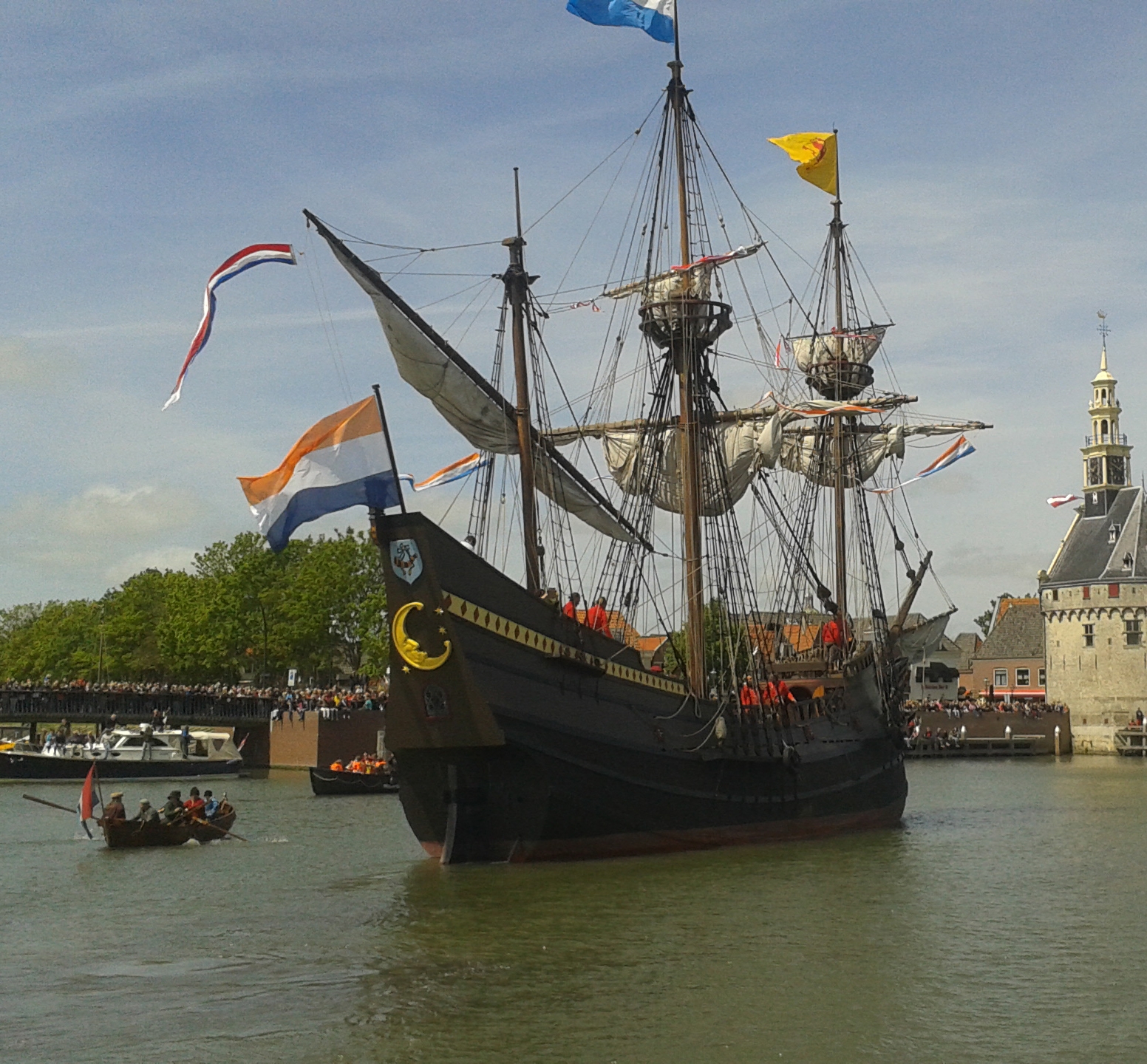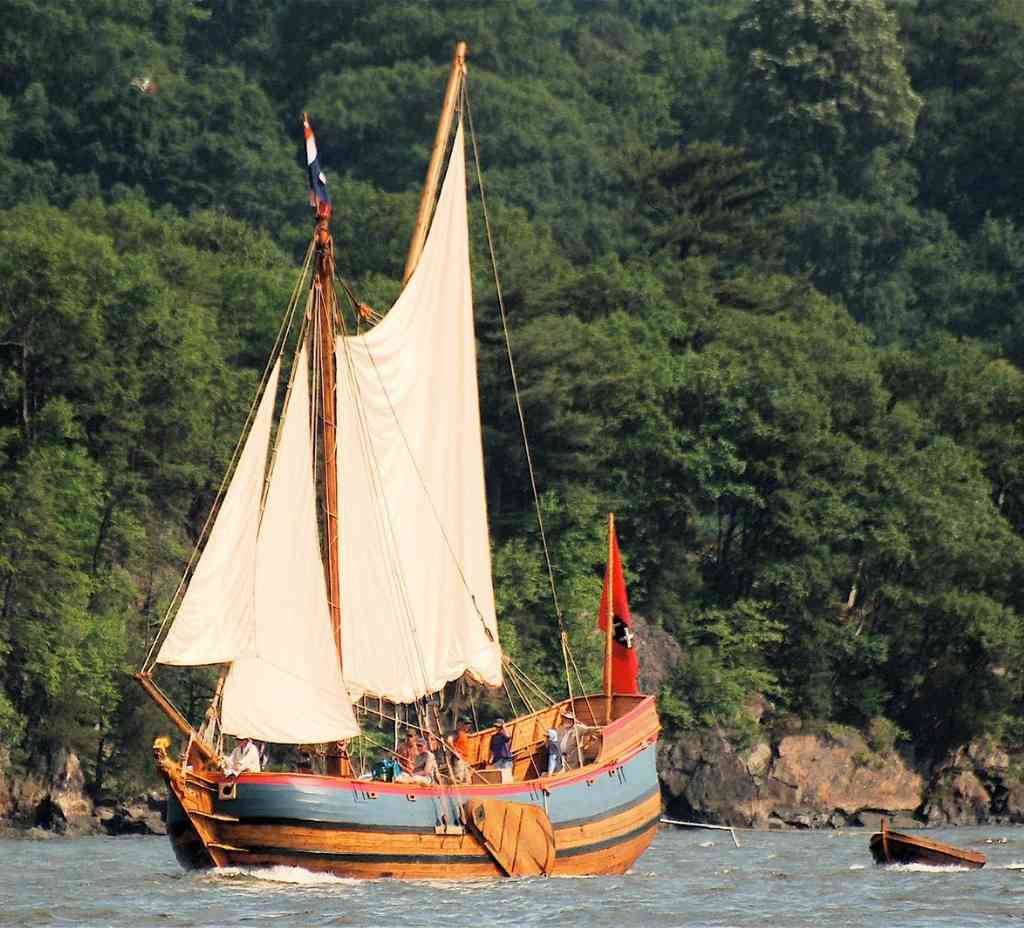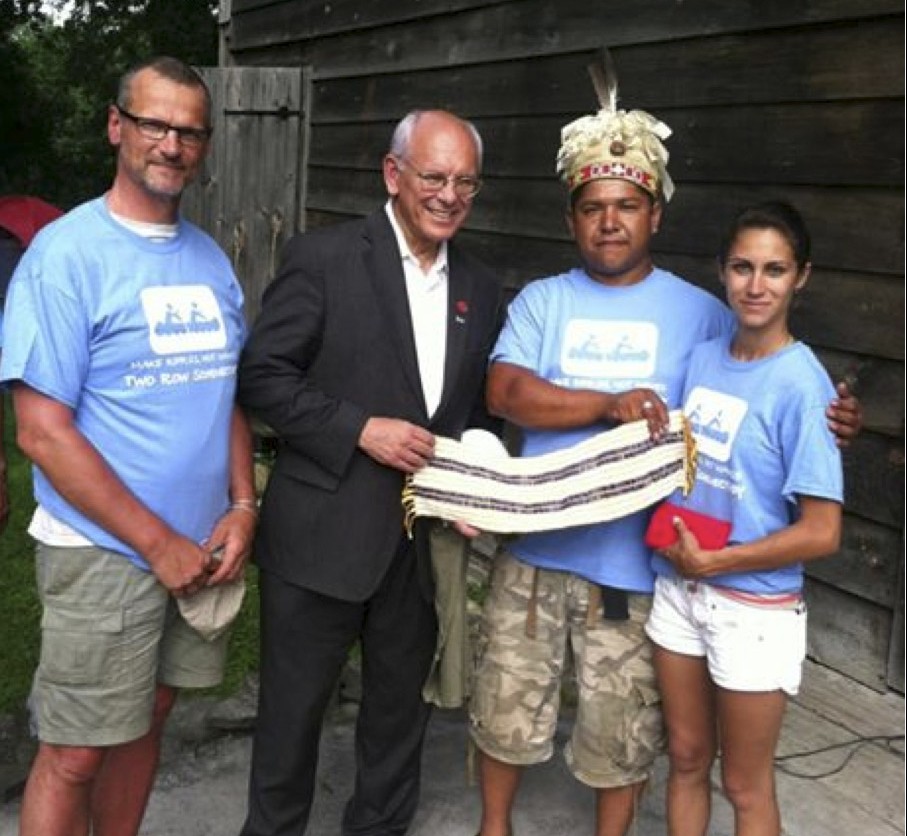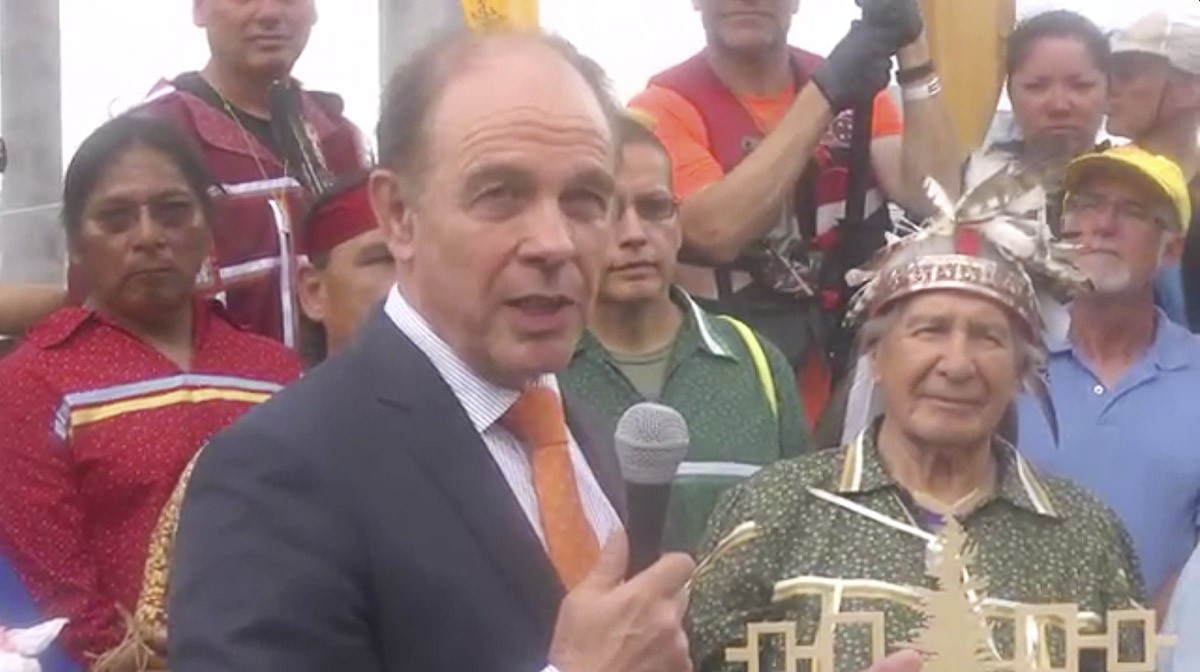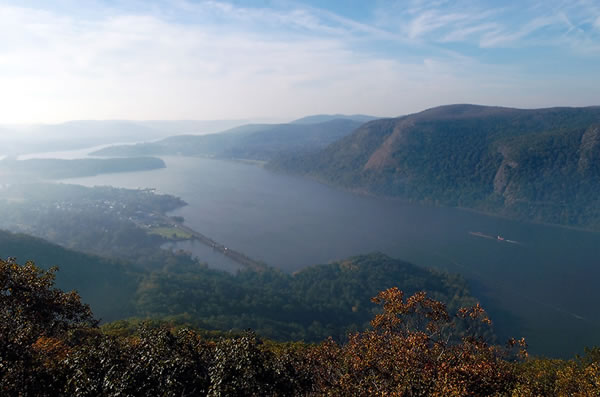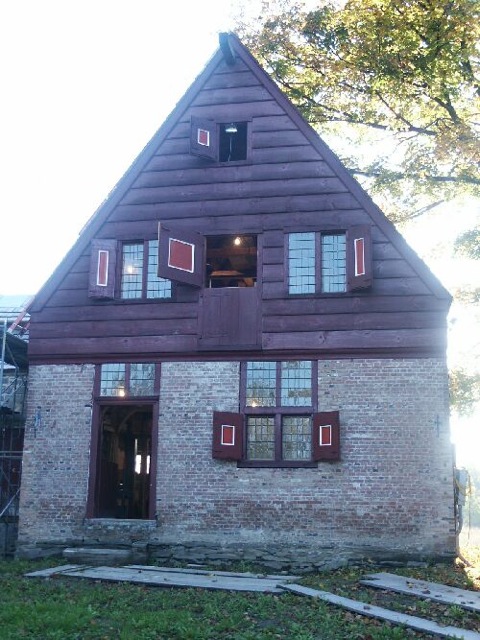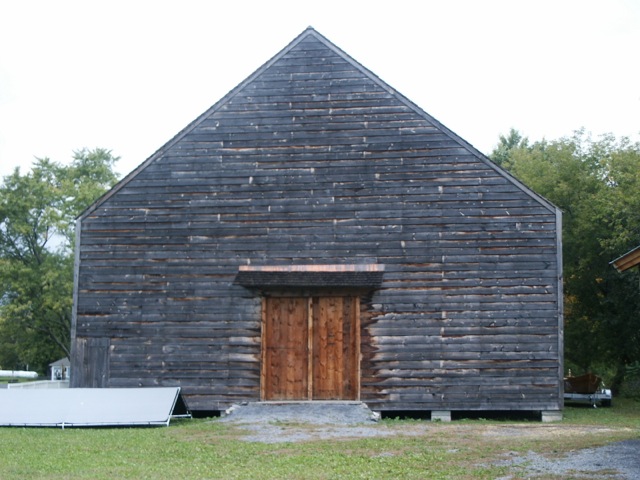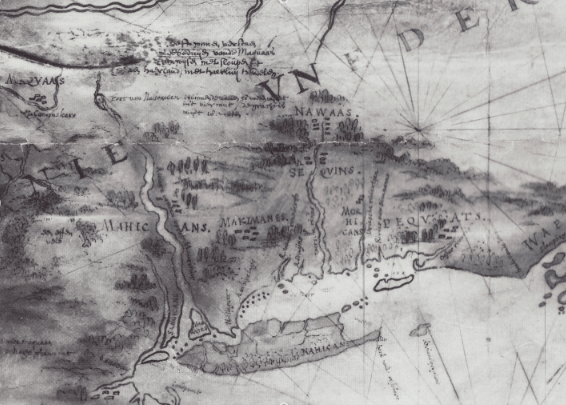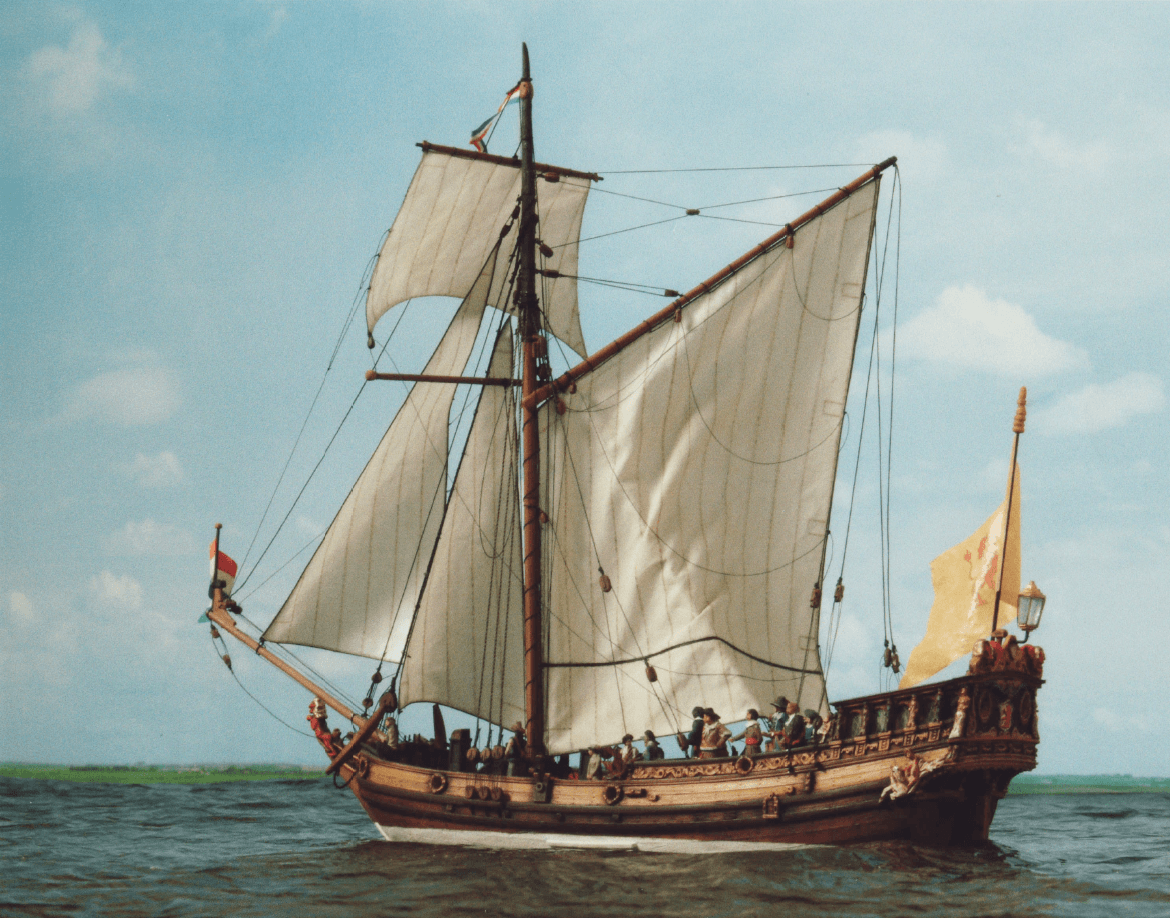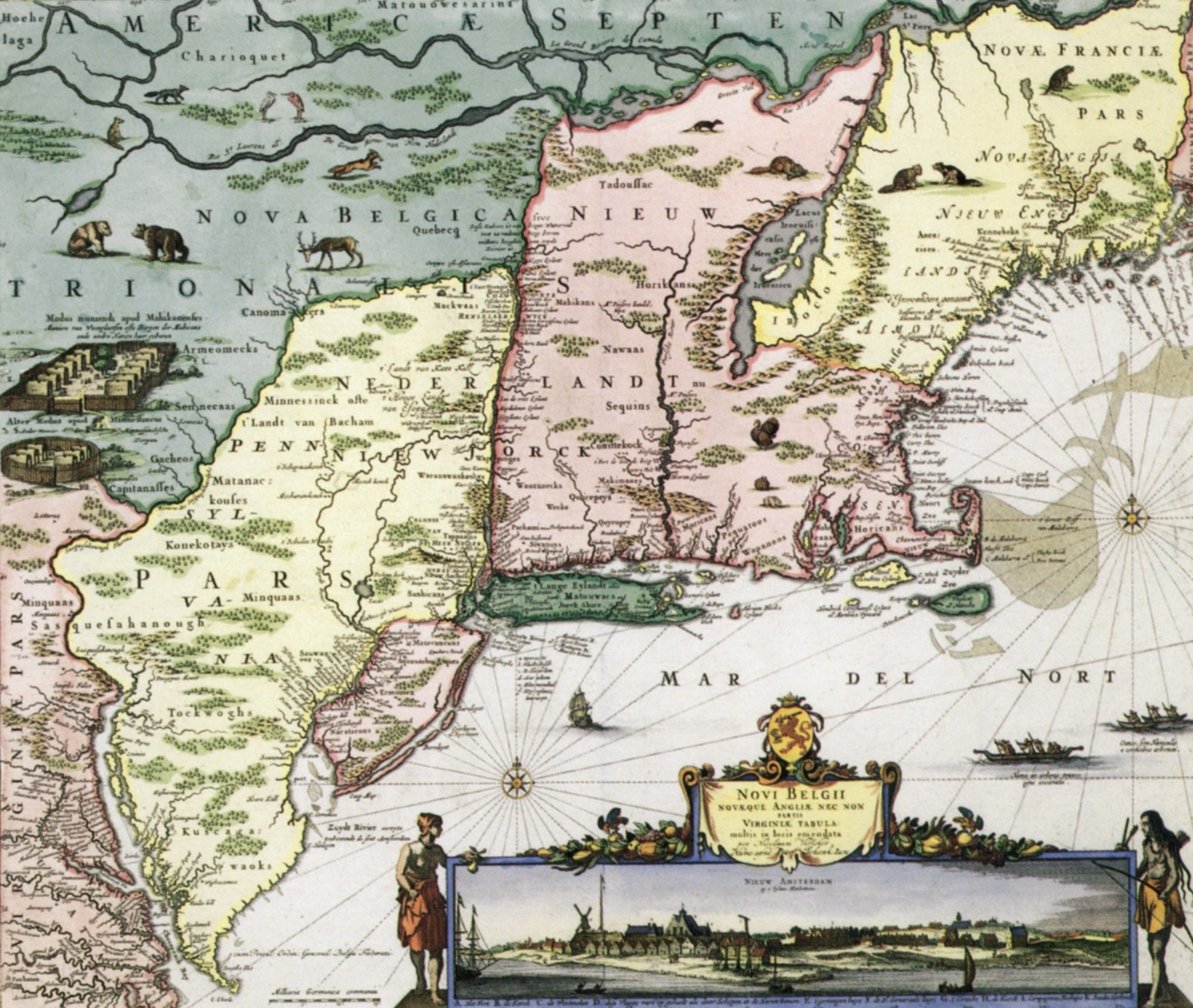In the current history of the origin of New Netherlands, New Amsterdam, and New York, Henry Hudson gets a lot of credit, but has he actually earned so much credit? Should the Dutch mariners and merchants, as well as the native North American peoples, not be given equal credit? Is it appropriate
that 1625 is generally regarded as the year of birth of the city of New York? Would 1614 not be more accurate? Read the story and watch the movies on this site, and maybe you too will come to conclude, as Hubert de Leeuw has, that in the history of New Netherland, and so New York, a lot of nuances still can be made.
The sea and merchants Christiaensen, Block and Eelkens 'rediscover' the Muhheakantuck river, and also make a real discovery: The sea-length Long Island Sound.
Merchants unite in the New Netherlands Company, are licensed by the States General and build Fort Nassau. New Netherland is born.
New Netherlands is officially a Dutch colony and province under the authority of the West Indian Company (WIC, founded in 1621). The first settlers settle in the area. The first settlers settle in the area.
The English claim the area 'because it has been discovered by an Englishman', and force Peter Stuyvesant under threat of war to surrender New Netherlands.
Click here for a more elaborate chronological list.
The Story of the Becoming of New Netherland, New York. (BNN)
In September 1609, in the ship the Half Moon Englishman Henry Hudson sails up a North-American river known to the native tribes as the Muhheakantuck, ‘the river that flows in two ways,’ . Hudson has been assigned on behalf of the United East India Company (VOC), to look for a
Northeastern passage to the east, but because of impenetrable pack ice near Nova Zembla, he soon realizes that this mission will fail (again). Rather than returning to Holland empty handed, he decides to sail to the west, to investigate what is true of the rumors of a passage through North America to the Pacific Ocean.
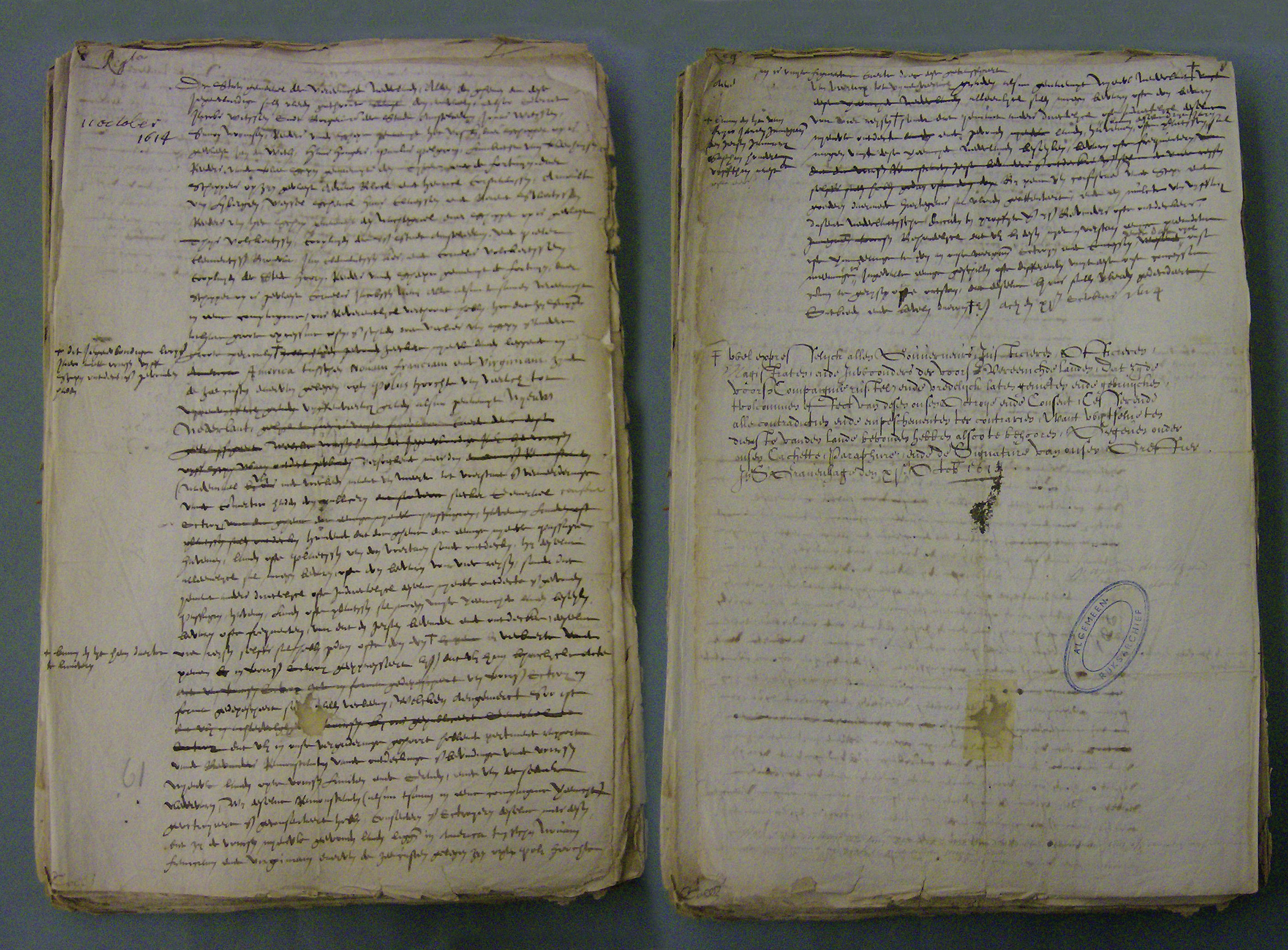
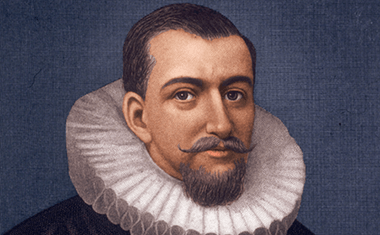

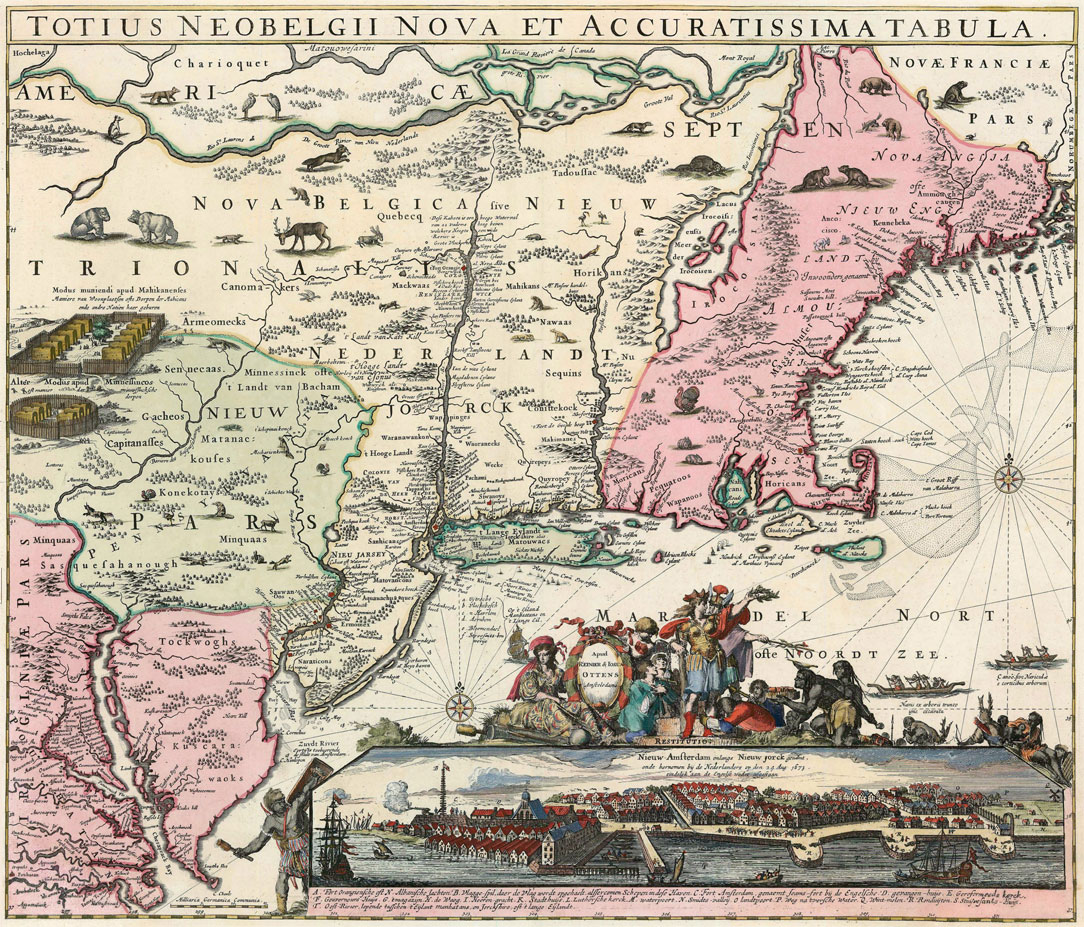
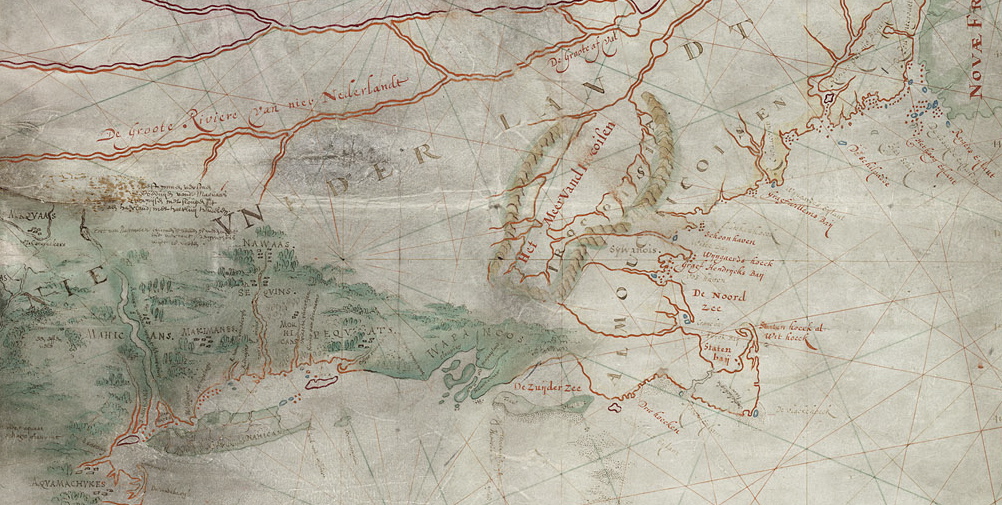
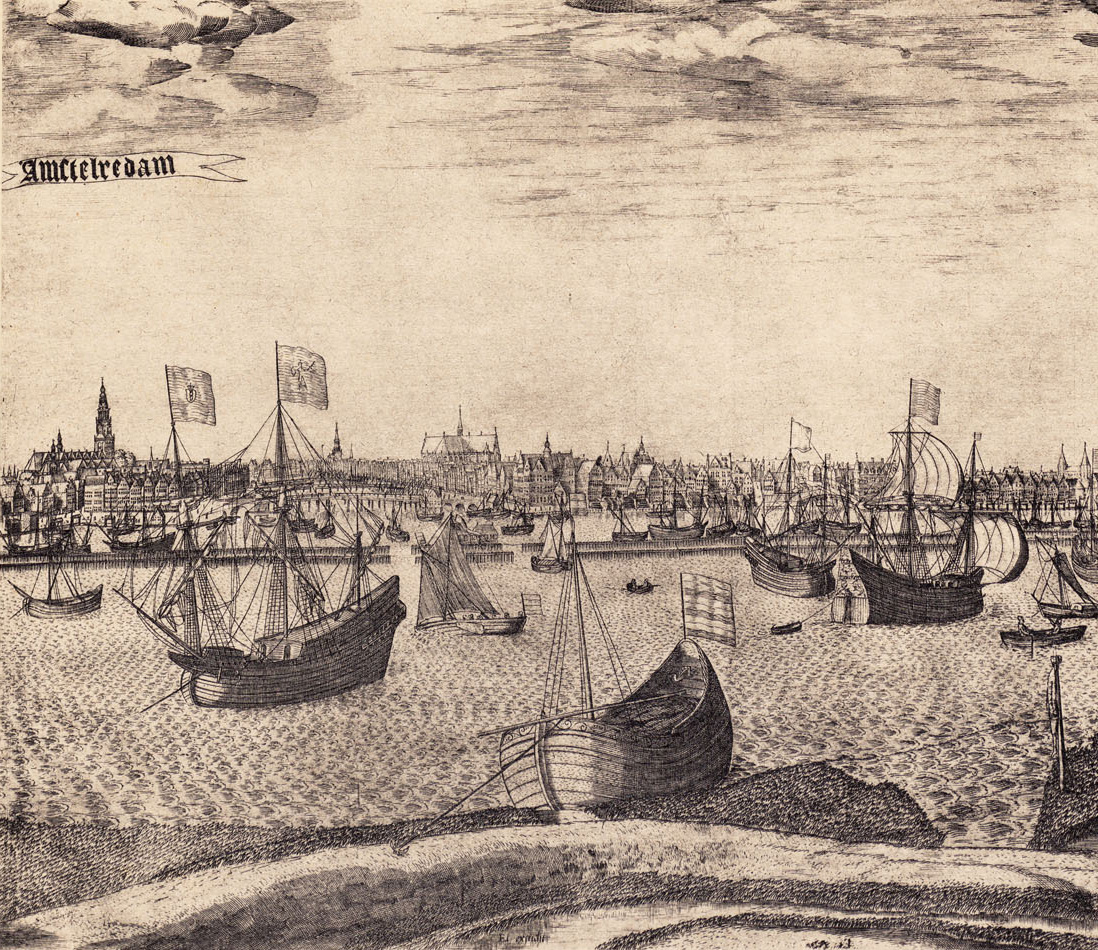
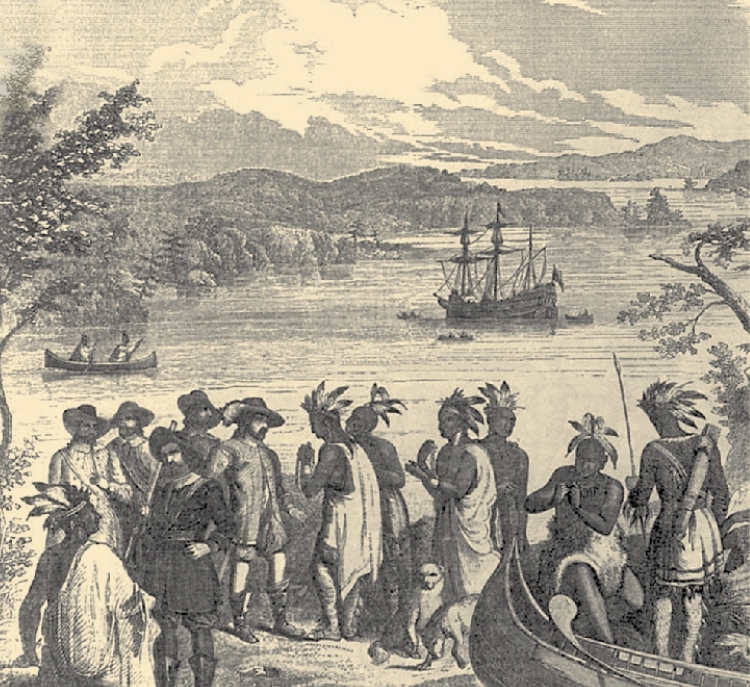
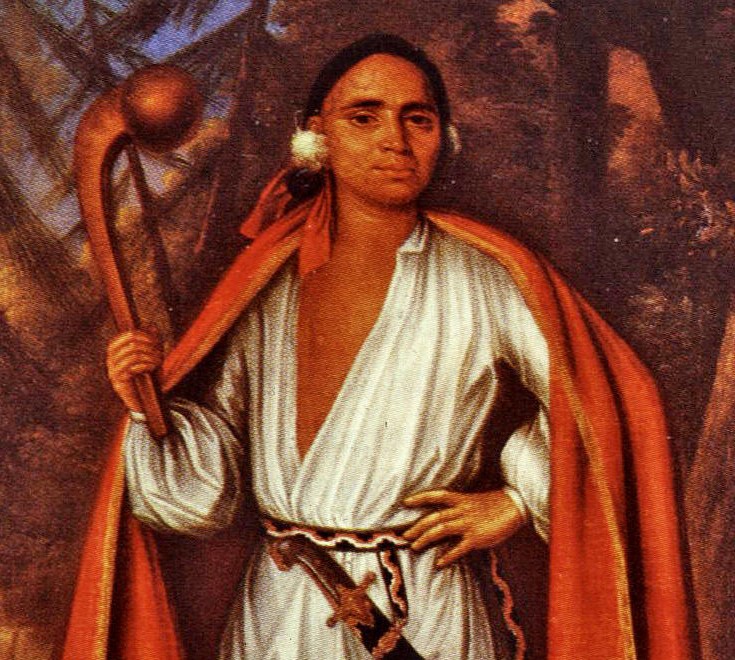
About this initiative
Traditionally, the history of New Netherland was written (by Anglo-Americans, the English, and the Dutch) with the starting point set at the coincidental discovery, in 1609, of the river and valley that would, in 1664, be named “its discoverer”, Henry Hudson.
History books then jump to 1624 when the region,
under the auspices of the West India Company, becomes a new overseas province of the Dutch Republic. The fifteen years in between are written-off as being insignificant and violent. Termed ‘a bloody and throat cutting period of trade without scruples’; of Dutch merchants and the dangerous native savages (the North American Indians), fighting each other. But, is that accurate?
Video 1| Introduction to the project by Hubert de Leeuw Video 2 | Hubert de Leeuw on the significant role of the free Dutch merchants

 Voor een totaal overzicht van onze video impressies bekijk ons Youtube kanaal of de Google+ pagina
Voor een totaal overzicht van onze video impressies bekijk ons Youtube kanaal of de Google+ pagina
Hubert de Leeuw, initiator and driving force behind the project ONN/NY
In the early 1990s, Hubert de Leeuw (Tilburg, 1961), entrepreneur from the Low Countries, more or less by coincidence, begins to research the history of the origin of New Netherland, the region on the east coast of North America, which today is known as New York State. During that time de Leeuw is in Seattle on business – he is going to introduce the five-gallon water cooler system used in the North America to the Netherlands – and makes a trip to Vancouver, just over the border in Canada. At a rather curious
meeting of, as he says, ‘spiritual people’, he is given the word ‘Algonquin’. Almost immediately, de Leeuw’s curiosity overcomes his skepticism and, back in Seattle he visits the library to find the meaning of the word. ‘Algonquin’ appears to be the name of an Indian tribe linked to New Netherland, Fort Nassau, Hendrick Christiaensen, and other Dutch merchants. In regard to that moment, de Leeuw states: “Something happened within me. I just knew I had to do something with it.” And that is what happens…
Bookshop
Under the title, “Coming to Terms with Early New Netherland – New York History”, Hubert de Leeuw, in collaboration with Timothy Paulson, has issued a trio of English language books on the origins of New Netherland.
Dutch versions are in the works, as well as three other books covering the original 16th- and early 17th-century text of the primary sources about the history of New Netherlands (and New York) transcribed in the Dutch language used at that time. These will be released in the autumn.
These titles are all available for download, free of charge, in PDF format, or order them as an e-book, or as a printed and bound book with the links listed below.
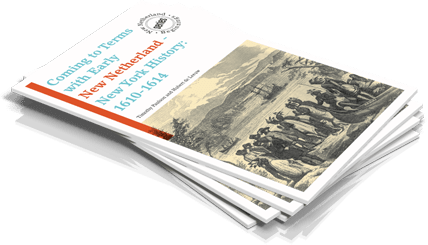
By researching, among others, primary sources, Paulson and De Leeuw show in 1610 – 1614 how in four short years the Dutch mariners and traders in the Hudson Valley laid a base for what, in 1624, would become the colony New Netherland.
eBook (via Gumroad): $ 4.95
Order
eBook or paperback (via Amazon): $4.95
Order
Paperback (via Bookpatch): $7.63 (includes shipping and handling)
Order
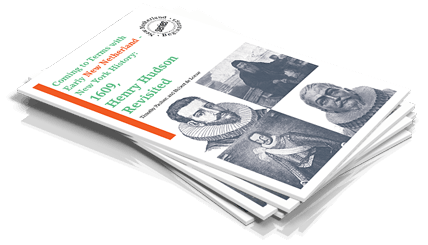
In 1609, Henry Hudson Revisited the credit given to this English explorer for being the ‘first one’ to discover the valley of the Muhheakantuck River is questioned. Today Hudson is honored like a hero, but is that praise deserved?
eBook (via Gumroad): $ 4,95
eBook or paperback (via Amazon): $4.95
Order
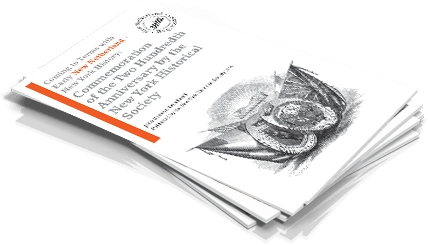
A re-print of the surprisingly pro-Dutch commemoration speech given by the American historian J.R. Brodhead in 1864 to the New York Historical Society about the seizure of New Netherland by England in 1664.
eBook (via Gumroad): $ 4,95
Order
eBook (via Amazon): $ 4,95
order
In Production
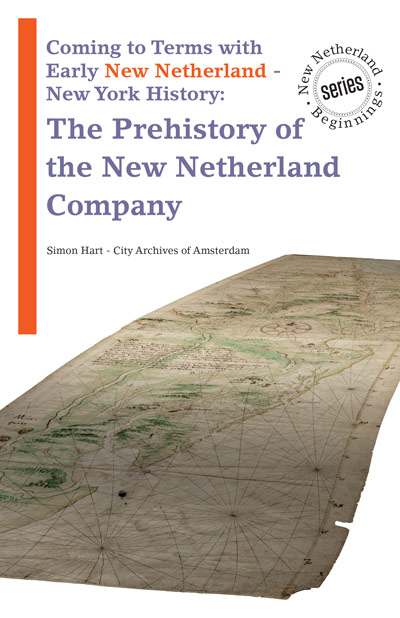
Coming to Terms with Early New Netherland – New York History:
The Prehistory of the New Netherland Company
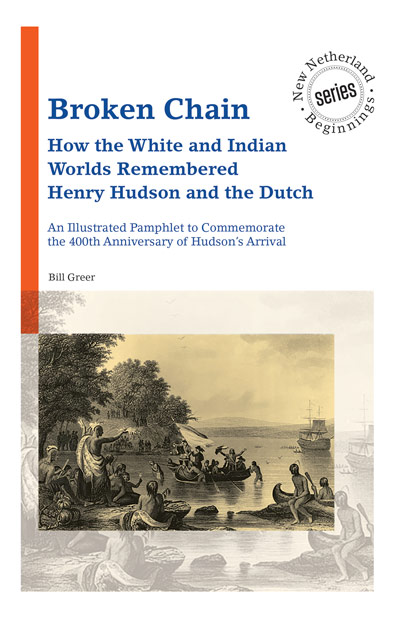
Broken Chain
How the White and Indian Worlds Remembered Henry Hudson and the Dutch

Dutch primary Sources – Vol. I
About New Netherland, New York beginnings – 1609-1624
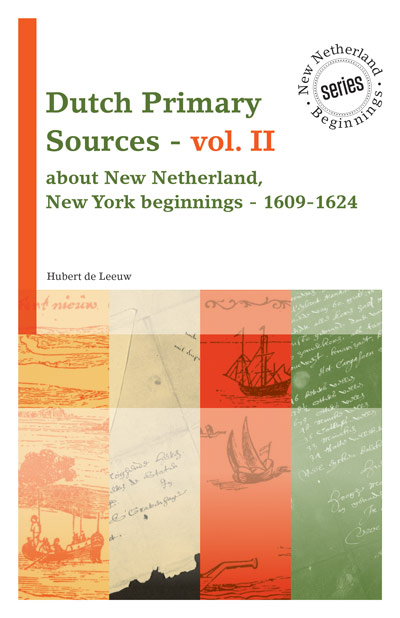
Dutch primary Sources – Vol. II
About New Netherland, New York beginnings – 1609-1624
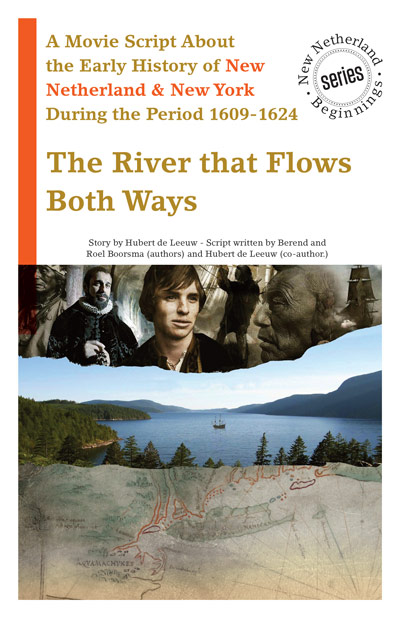
A Movie Script About the Early History of New Netherland & New York During the Period 1609-1624
The River that Flows Both Ways

Honor Where Honor is Due (Dutch version)
New insights and new truths about the beginnings of New Netherland, New Amsterdam and New York
Part I: 1609-1614
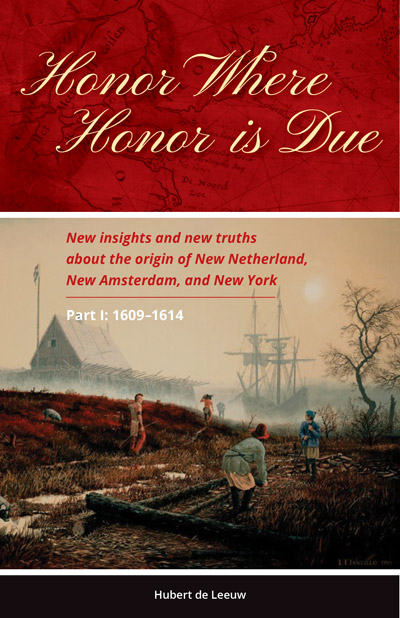
Honor Where Honor is Due
New insights and new truths about the origin of New Netherland, New Amsterdam, and New York
Part I: 1609-1614

Van Meteren’s Virginia 1607-1612
By John Parker
Honor Where Honor is Due
New insights and new truths about the beginnings of New Netherland, New Amsterdam and New York
In May of this year, the historical pamphlet Honor Where Honor is Due will be published. In this document, a new vision of the origins of New Netherland, New York, and the unique Dutch-American relationship are presented. Honor Where Honor is Due is the first part of a two-part series and focuses on the period 1609-1614, when free Dutch mariners and traders laid the foundations for what would eventually be the city and state of New York. The pamphlet notes Henry Hudson’s famous 1609 journey in The Half Moon to the east coast of the New World. Part Two details the period of 1615-1624. This brochure provides a preview of Part One of Honor Where Honor is Due. If, after reading, you discover you would like to know more, please add your email to our mailing list and we will send updates on the official release dates. Download the PDF by clicking here .
New Netherland today
